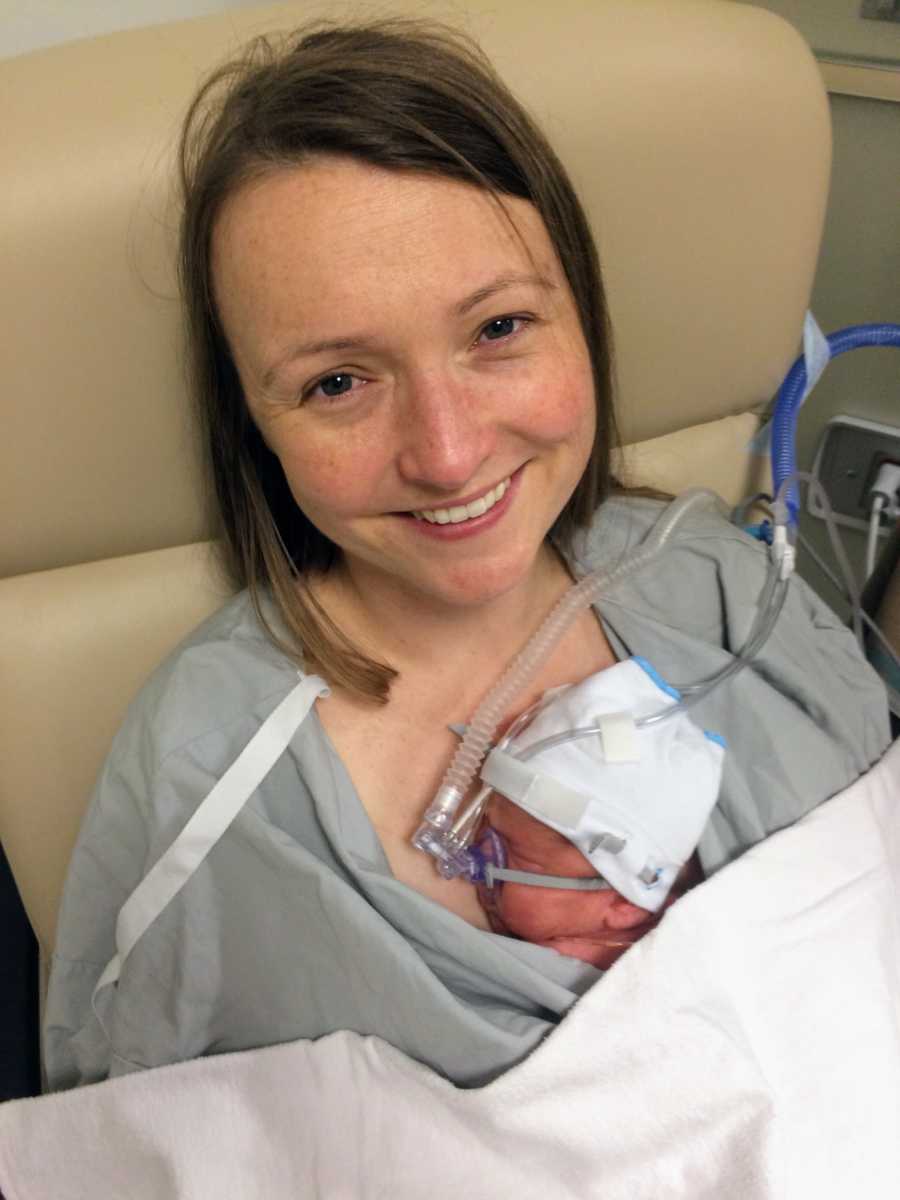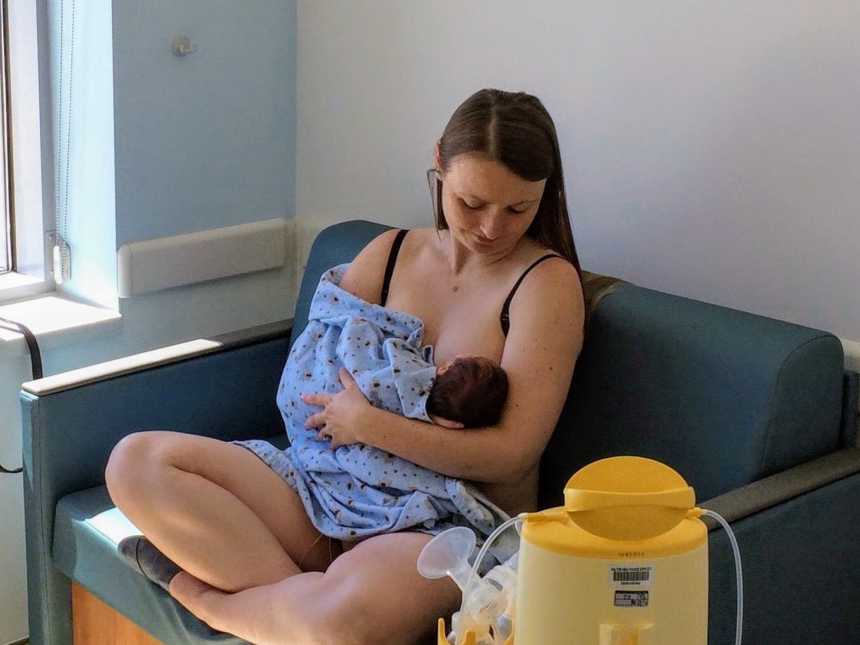“Once my breast milk became tainted with chemotherapy, my son could no longer drink it.
I only got a month’s worth of usable milk before treatment started, so production was ramped up and the milk factory was open round-the-clock. I pumped 10 times a day. I never got much milk in, so it felt like trying to squeeze the last drops from an already squeezed lemon. Stress can hamper milk production. An emergency C-section. Being hours from home with a preemie in the hospital. Trying to wrap my head around a cancer diagnosis. I had a few things on my plate.
Fortunately, my son had access to a milk bank at the hospital, which was rigorously tested. Such non-profit programs receive the ‘liquid gold’ from moms who have more supply than their baby needs. Outside of the hospital, friends offered to pump milk for my son while I was in treatment, giving him the nourishment I couldn’t. A modern day wet nurse.
My pump went everywhere I did. To doctor’s appointments. To visit my son in the hospital. It didn’t matter. I dragged that hospital grade double electric breast pump with the hard-shell case that neared the size of a carry-on suitcase everywhere I went. It elicited some perplexed looks and earnest questions such as, ‘Is that a French horn?’ and ‘Is there a cat in there?’
Treatment was only supposed to last 5 months, so ‘pumping and dumping’ was a no brainer for me. It was a phrase I had heard friends use while sipping on drinks at an open bar at a wedding. Mom needs a night out once in a while.
Sure I’d scale it back. I wouldn’t continue pumping 10 times a day. But I would pump so that my milk supply wouldn’t shrivel up like peaches when you leave them on the counter for too long.
The dumping part of the idea stopped abruptly in its tracks when a lactation consultant suggested that I drink my milk for the antibodies. The idea, at first, seemed weird and kind of icky, but interesting. If my milk could help my son’s immune system, could it help strengthen mine? I knew I’d be severely immune compromised from treatment.
Well at least we should see what it tastes like.
My husband and I sampled the milk before I discarded it after a CT scan. Our son couldn’t drink the milk anyway because of the dye from the scan, so we thought we’d give it a shot. It had a sweet flavor and a thinner consistency like almond milk.
Not bad. Not bad at all.
So with my breast pump in toe, I pumped and ingested my milk for the next 6 months. I set a daily alarm, which sometimes went off during my chemotherapy session. I pulled the curtain around me closed. The pump’s rhythmic breathing chanted across the chemo suite. A nurse would pop her head in to see what’s going on. Oh you know. Just a cancer patient pumping breast milk with one hand while the other one received chemo through an IV drip.
I almost gave up a few times. My husband always asked, ‘are you sure?’ like your computer asks when you go to delete something. It was physically exhausting waking up to pump and soothe my son, which I couldn’t do at the same time. My husband took over the night feeds once treatment began. I also scaled back the pumping frequency, eventually, only pumping once a day.
Pumping finally ceased when I experienced significant treatment delays due to low white blood cell counts. Five months had already come and gone, with the end of treatment nowhere in sight. Another chemo drug was added to my cocktail which would further delay my ability to give my son milk for another 6 months after treatment ended. The burden of another year of pumping seemed to finally be too much. My pumping days were over.
It wasn’t until months later when I reflected on why I had experienced an unusual response during treatment did I think back to the breast milk. The cancer in my cervix had already spread to my lymph nodes when the tumor was discovered. But while undergoing treatment, the lymph nodes calcified, an unusual response, rather than changing in size, which is a more typical response. It is common for lymph nodes to have leftover calcium deposits from infections or inflammation, kind of like scar tissue, but it isn’t a typical response during treatment, particularly in such a short time frame. My doctors agreed that it was likely a good response. Just one that they had never seen in treatment.
The only thing I could point to is the breast milk. Other people did the same things I did. Meditate. Rest. Exercise. Eat well. Have a positive attitude. I wasn’t doing anything different, except that I drank small amounts of my own breast milk.
My theory is that my body harnessed the milk in the way it needed to fight cancer, whether it was through stem cells or other properties like HAMLET that have been shown to cause tumor death. It’s anecdotal evidence for now until research can catch up and test my theory.
I would never suggest taking milk away from an infant. In my case, my son couldn’t drink it. I had pumped in hopes that my son could have my milk again when treatment ended. I thought by drinking my milk, rather than dumping it down the sink, it might help my immune system, or worst case scenario, do nothing. To my surprise, ingesting the milk produced by my very own body turned out to be helpful in my fight against cancer.
I struck gold. Liquid gold.”

This story was written by Christa Wilkin, 34, of Toronto, Ontario, Canada. The article originally appeared here. You can read more of her work at Nevertheless She Persisted.
Submit your story here, and be sure to subscribe to our best love stories here.
Provide hope for someone struggling. SHARE this story on Facebook with your friends and family.

